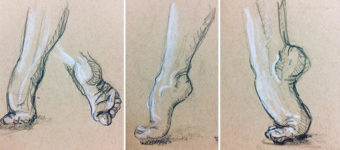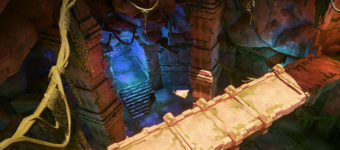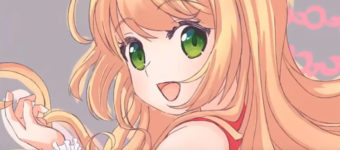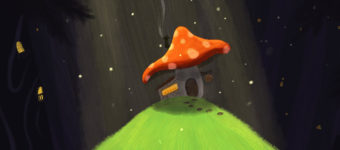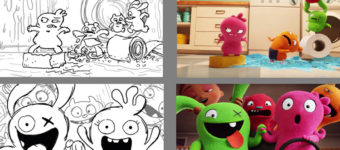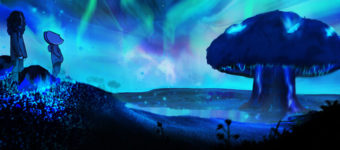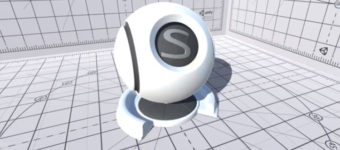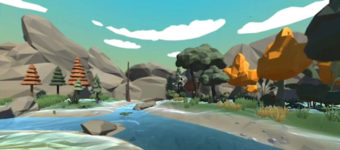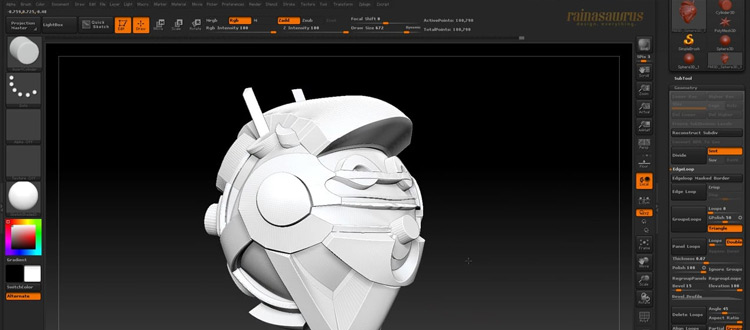
10 Best ZBrush Books To Go From Beginner To Advanced
World renowned game studios rely on ZBrush every day for rendering and modeling. It’s a powerful program that goes beyond typical 2D concept art to help you learn about form, animation, texturing, and modeling.
If you’ve never heard of this program check out this intro video to learn more about how ZBrush works.
Chances are if you’re reading this you already know ZBrush is used in concept art. But you probably don’t know how to start learning. So I’ve collected the top 10 ZBrush books to help beginners get their feet wet while also helping more advanced users improve their skills.
Note: If you prefer video tutorials the Maya ZBrush series might work better. It has over a dozen video courses on ZBrush fundamentals which is perfect for beginners who wanna learn fast, not to mention Pluralsight offers a free trial for new members.
Introducing ZBrush 3rd Edition


Eric Keller is a freelance CG modeler and he’s the perfect person to write this intro to ZBrush book. This is the absolute compendium of ZBrush totaling over 500 pages of intro tips, techniques, guides, and workflows for beginners.
Introducing ZBrush is currently in its 3rd edition updated to the most recent version of ZBrush. You’ll learn about how sculpting software works and how you can create ZBrush assets that transfer into other programs like Maya and Photoshop.
Once you understand how ZBrush works Eric dives right into the fundamentals of modeling. You’ll learn organic and hard surface sculpting, rendering texture, realistic lighting, and manipulating 3D sculptures with scripting. This book assumes no prior knowledge so it’s made for the absolute beginner.
And you get a bonus DVD with the book that gives you minor assets and extra features to help you along the way. This is the ideal beginner’s book for learning ZBrush because it’s dense, up-to-date, and written by an industry professional.
Getting Started in ZBrush: An Introduction to Digital Sculpting and Illustration


This book written by Greg Johnson is a nice alternative to aspiring 3D artists. The topics are much gentler and they ease into the content without too much technical detail
Getting Started in ZBrush is the perfect book for a beginner with no experience who needs to understand why they’re even learning ZBrush in the first place.
Greg is a well-studied ZBrush user and teacher who has been teaching classes for over a decade.
Each chapter leads into the next where you’re taught through real tutorial work. You start with the ZBrush UI and quickly move into workflows for sculpting, rendering, and exporting assets.
You get 300+ pages of simplistic writing and very clear examples to guide you from a complete novice to a competent ZBrush artist.
ZBrush Characters and Creatures


A large handful of ZBrush professionals contributed to this book offering tutorials that teach you real concept workflows. You’ll build alien busts, biped and quadruped creatures, along with more extensive tutorials on texturing.
ZBrush Characters and Creatures features six individual chapters each following their own tutorials. You’ll learn many different techniques for sculpting, rendering, and texturing creatures from scratch. Topics delve into sci-fi and fantasy elements along with humans and animals.
Each chapter contains a handful of tutorials totaling just over 30 different exercises. The book also includes commentary from 15+ industry experts who offer tips, techniques, and advice for new ZBrush users.
However this book really isn’t made for complete beginners. You do need some knowledge of ZBrush before you get started with this book. However even if you just know the absolute basics you can learn a lot from following these exercises.
Sculpting from the Imagination


Intermediate to advanced artists will fall in love with Sculpting from the Imagination because it’s such an unordinary book. Instead of custom tutorials you get 50 individual artists sharing their artwork, tips, tricks, and workflows for working in ZBrush.
Learning to sculpt in 3D takes time and a lot of practice. Professional advice should always be welcome, but it can only be understood by people who already have a certain level of experience.
I’d recommend this book for anyone who can already sculpt their own projects in ZBrush. You don’t need to be an expert but you should already be comfortable with the software.
This book will not teach you specific tutorials or detailed workflows beyond artist commentary. This is more like a gallery of professional work with interviews & snippets from the artists. Great for anyone looking for advanced ZBrush ideas but not a good choice for absolute beginners.
ZBrush Character Sculpting: Volume 1


Modeling from scratch involves multiple layers and there’s no single way to master them all. Practice always makes perfect. But studying other works can help you learn what you need to practice and gives you a level of quality to aim for.
ZBrush Character Sculpting: Volume 1 is perfect for intermediate or advanced ZBrush users who want to master the art of sculpting. This is not a reference guide for beginners and if you have no prior experience you will not be able to follow along.
But if you already understand the ZBrush interface then you’ll likely have your own workflow for characters. This book forces you to analyze your workflow and offers some helpful tips to improve the sculpting process.
Each chapter covers a different technique and you can easily skip around to different chapters. The index is easy to reference and overall this is one hell of a ZBrush book. Just make sure you’re already comfortable with sculpting before diving in.
ZBrush Creature Design: Creating Dynamic Concept Imagery for Film and Games


Most entertainment studios rely on ZBrush for character creation and modeling. These assets can be moved into Maya and other programs for animation, but character design is still a vital process.
ZBrush Creature Design by Scott Spencer is such an invaluable book that I have to recommend it for almost everyone. If you’re a complete beginner start with an easier book like Introducing ZBrush. But if you can make it through that you’ll be ready for ZBrush Creature Creation.
Scott teaches how to combine Photoshop painting & rendering with the sculpting techniques of ZBrush. He also introduces a workflow for moving between Maya and ZBrush, something that every modeler should learn eventually.
This book specifically targets concept artists who need to create creature assets for games and movies. Anyone serious about ZBrush for concept art should have a copy of this book on their bookshelf.
Anatomy for 3D Artists: The Essential Guide for CG Professionals


This has been recommended as a general anatomy guide but I think it’s a crucial study aid for 3D modelers too. It uses the human anatomy as a guide for sculpting and while it’s software-agnostic it can still work well for ZBrush users.
Anatomy for 3D Artists should be high on your purchase list. Whether you’re working in ZBrush, Maya, or Photoshop there’s plenty of reason to master anatomy for sculpting. The author starts with very basic 2D diagrams and quickly moves into 3D sculptures to help you understand the entire human anatomy.
Granted this book cannot replace a detailed anatomy guide like the Goldfinger book.
However it can get you on the right track thinking like a sculptor and looking at anatomy from a sculptural point of view. Regardless of why you want to use ZBrush I would highly recommend grabbing a copy of this book.
ZBrush Professional Tips and Techniques


Once you’re building your own creatures and concept designs from scratch you’ll be ready for the big leagues. ZBrush Professional Tips and Techniques teaches you how to think about sculpting everything from people to vehicles and props.
ZBrush’s parent company Pixologic brought their own artists to write this ultimate compendium of advanced techniques. You’ll learn about shortcuts and workflow tips that can save you time and produce a much better outcome for whatever project you’re working on.
You’ll also learn why ZBrush is so powerful and when it should be utilized for the best results. The authors also interview professional ZBrush artists to get their secrets and tips for aspiring professionals.
I cannot say enough good things about this book. If you’re hoping to work in the entertainment industry from modeling to rendering or animating you simply have to get a copy of this book.
ZBrush Digital Sculpting Human Anatomy


Here’s another detailed human anatomy guide with a slant towards 3D sculpting. ZBrush Digital Sculpting Human Anatomy comes with a whopping 416 pages and a CD/DVD combo for related tutorial assets.
This book starts with the basics of human anatomy: the skeleton. You learn by studying live examples and diagrams to see how the bones connect and move with joints. Then you learn about muscles, fat, and skin layering over the whole package.
If you do get this book consider grabbing the print version over the digital version. You do not get direct access to the CD/DVD contents unless they come shipped with the book, and a digital copy of the book may be useless without the supplementary material.
It is possible for a newbie to pick up this book and still follow along. If you don’t already know the ZBrush interface then you’ll struggle, but it’s certainly possible to get by.
I’d recommend this to someone who knows the foundations of ZBrush and wants to move into practical applications for rendering real projects.
ZBrush Character Creation: Advanced Digital Sculpting


The author of this book Scott Spencer is the same as the previous book on sculpting human anatomy. I think these two books pair together nicely because they combine knowledge of human anatomy with detailed character creation.
ZBrush Character Creation: Advanced Digital Sculpting takes you on a journey through the advanced features in the newest version of ZBrush. You go far beyond basic sculpting to look at consuming and building realistic fabrics for clothing.
The author’s film credits include Harry Potter and The Hobbit, both of which are CG-heavy films.
Everything you learn in this book is what you’d expect to learn in an advanced class at a high-tier CG/concept art school. Except this is a lot cheaper and much more focused on specific exercises.
I would only recommend this to ZBrush users who already know how to start and complete a project from scratch. You don’t need to be amazing but you should already be comfortable with 3D modeling before you pick up this title.
Every ZBrush book in this list can be useful to the right person. Most 3D modelers either want to break into animation or concept art—both very competitive industries.
But with this library of incredible ZBrush books you’ll have a big learning advantage.
Complete beginners should start with a very simple book like Introducing ZBrush and move from there. If you put in the practice you can quickly move to the more advanced books in this list. Before you know it you’ll be rendering and sculpting like a professional with a top-notch portfolio to prove it.


